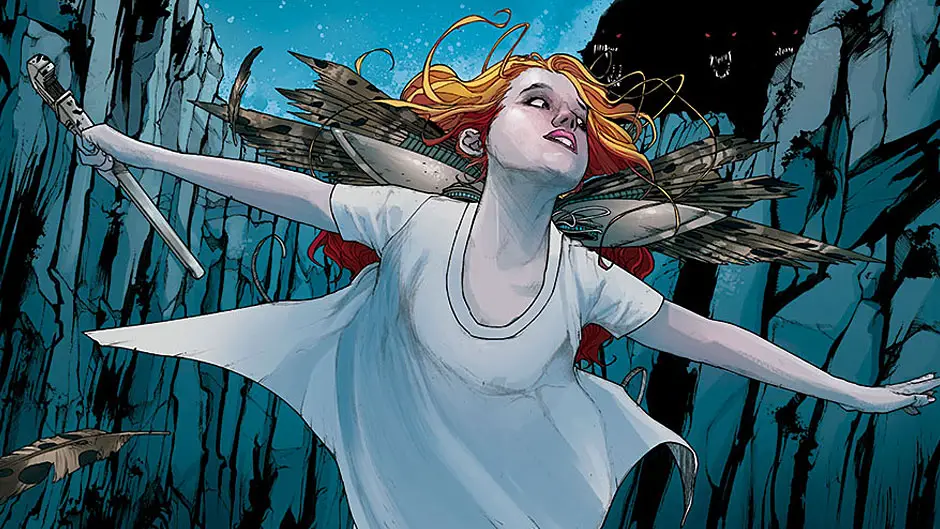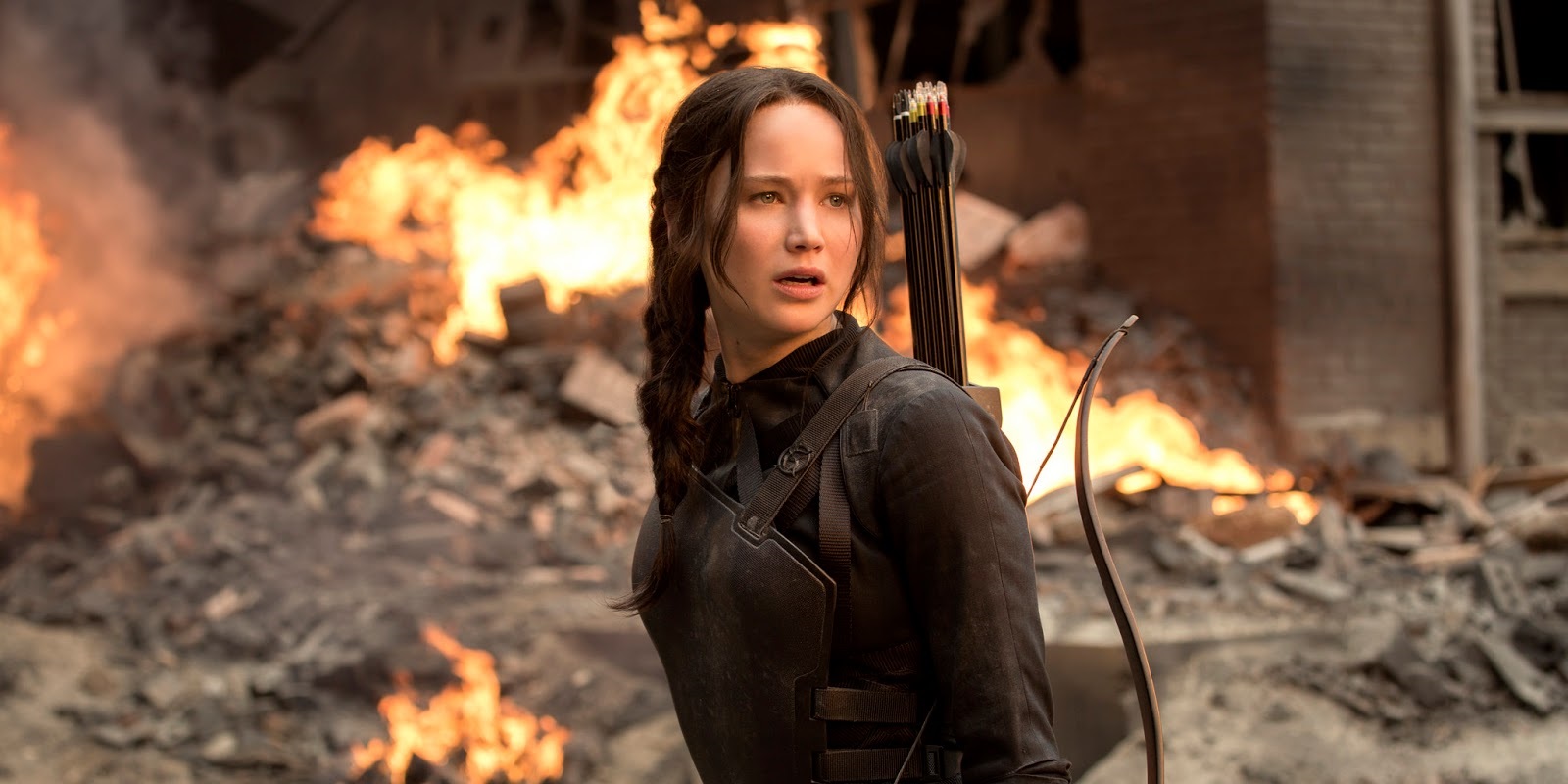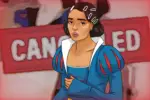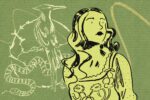“Young Adult” is a literary classification as gray and muddled as its real-life application. A certain level of maturity is implied, but not enough, or as much as an actual adult. Acknowledging these parameters as vague would be an understatement, but since the successes of bookshelf blockbusters like the Hunger Games and the novels of John Green, the YA business has been booming. Nearly every bookstore has a section devoted exclusively to books written for a teenage audience.
At their best, YA books are composed of stories and themes simultaneously accessible to teenagers, while still challenging, engaging and stimulating. But at their worst, YA novels are training wheels riddled with tired, predictable tropes, imitated concepts and condescending writing, aimed at teens perceived as unready to read a real “adult” book.
Unfortunately, since the YA genre was officially demarcated, separated from both the children’s and adult sections, it has become saturated with the latter. What are some of the primary problems with Young Adult books now, and what can be done to repair the genre?
1. Easy, Dull Prose
Obviously, all of literature exists on a spectrum, and different authors have varying writing styles and an array of audiences who enjoy specific types of prose. Even though they’re both in the fiction section, a book by James Joyce is going to feel wildly different to read than one by Stephen King. There is absolutely no issue with variety in writing. All prose should not be ornate and intricate, nor should all writing be sparse and modern. The various voices of the authors on book spines are what make the shelves feel alive.
By these same standards, the YA shelf is becoming increasingly dull. If YA is a genre designed to cover the vast amount of growth, which takes place between the ages of twelve and eighteen, one would expect to find a wealth of unique prose styles. After all, teenagers are an absurdly varied demographic, with reading levels often not correspondent to their age.
Unfortunately, many of the YA books being sold now feel bland. There’s little personality to the prose, and one gets the sense that writers are casting the widest net and writing for the broadest demographic possible, especially after cracking open multiple novels written in the same unassuming style.

I was made most acutely aware of this at 15, when I read the first of James Patterson’s “Maximum Ride” series for summer reading. I was baffled at how little effort was put into any of the novel’s description or character development. The most common dialogue word was just “said,” and the plot was ultimately shallow and unsatisfying. I felt insulted on behalf of my entire age group. Patterson was talking down to us and assuming teenagers couldn’t handle anything structurally complicated.
I’ve since realized most of Patterson’s books are very simple, or simply ghost-written, but the feeling never left. With a few exceptions, the overall prose style of YA fiction seems to be trying very hard not to rock the boat, settling for non-inventive and overly simple methods for conveying ideas.
Variety is important, and there is a place for simple prose. I don’t want to sound haughty and pretentious in my criticism, but I believe teenagers are a lot smarter than most people give them credit for, and the YA market is depriving them of potentially excellent and inventive works, because they don’t think they’ll be received well or that teens will find them too hard to read. Teens have extraordinarily adaptive, growing brains, and they can handle a lot more than these publishers think.
Authors who write for teens should ask themselves if they’re really using their true narrative voice, or whether they’re pandering to a demographic they perceive as less capable. Publishers, in turn, need to recognize the value of innovation, diversity and risk for their overall brand, rather than just flooding the market with mediocrity for the sake of meeting a yearly quota.
2. Too Many Clones
“The Hunger Games” absolutely dominated the YA market when I was in middle school. It flew off the shelves and was devoured by a wide audience of teens and adults, before being adapted into a four-part movie franchise. Suzanne Collins’ novel changed the game for what was perceived as permissible in a YA series, remaking the market in its image.
Nearly every new YA series was hyped as being similar to “The Hunger Games.” Novels like “Divergent” and “The Maze Runner” sought to imitate the dystopian formula, a fact that was becoming increasingly obvious as the shelves filled with different attempts at similar trilogies. Each began with a main character who becomes embroiled in a sinister, mysterious conflict orchestrated by a government entity, and ends with them becoming the center of a resistance and toppling the social order.
Ultimately, I was pushed out of YA by the sheer amount of carelessly constructed dystopian fiction.
I won’t pretend some of these weren’t fun. I greatly enjoyed “The Maze Runner,” though each of the consecutive books were a step down in quality, and the “Legend” series was able to take the formula a step forward by playing around in the muck of moral relativism, using the pinball allegiances of its two main characters. However, a book like “Divergent” was a perfect example of a frustrating attempt to shock rather than tell a compelling story. Though the initial concept was interesting, the author failed to take the plot outside the realm of trying to startle the reader with harshness.
Imitation is not unique to YA. The market responds to what it perceives that people want, but such an effect can get really claustrophobic in a market as contained and echo chamber-like as YA. Ultimately, I was pushed out of YA by the sheer amount of carelessly constructed dystopian fiction. I’m sure others have been put off by repetitions of the formula.
Variety and invention are the necessary ingredients for good storytelling. If the only books being published are only ones fitting a profitable formula, everyone loses. The stories become predictable and boring for the reader, and will soon fail to sell. I don’t necessarily fault authors of YA for this phenomenon. I’m sure there are a wealth of up-and-coming writers who are trying out new ideas, but failing to get published.
While that is the nature of the beast, those in the publishing industry should take greater notice of a wider range of concepts instead of saturating the shelves with tropes they determine profitable.
3. Does It Need to Be a Series?
This one’s simple. There are a lot of trilogies and multi-part stories out there right now, which can be great, but also feel forced. Writers should ask themselves whether their story really needs to have a multi-book arc, and shouldn’t be afraid to just write a solid one-volume story. A really great novel feels full of life on its own terms, and shouldn’t just be a stepping-stone for a sequel.
“Miss Peregrine’s Home for Peculiar Children” is an unfortunate example of a book in which most of the action takes place in the last four chapters of the book for the sake of an unsatisfying and premature cliffhanger. Maybe Ransom Riggs’ trilogy would have felt more worthwhile if he had condensed his story.
4. Cut Down Character Tropes
The classic character dynamic in the post-“Twilight” era of YA was the love triangle, overdone in copycat books to a point where people started to gag at the mere mention of two people competing for the attention of one. I’m not saying writers shouldn’t have love-triangles in their novels, but there needs to be a real justifiable purpose for the existence of a love-triangle besides aimless drama.
Better yet, more YA writers should attempt to subvert tired character tropes. There’s a lot of gold to be mined from turning accepted plot-beats inside out, and doing so can be profound, shocking and highly engaging. Basically, authors should try to imitate how people interact in real life, not in other books. Seeing how messy and unpredictable human relationships can be is comforting to a teenager trying to navigate similar chaos.
5. Greater Representation
Having more characters who are LGBTQ+ and/or people of color would be fantastic, especially if their identity isn’t always the primary focus of the plot. Just having a gay main character for no other reason besides the fact that people are often gay would be an awesome way to normalize the existence of more identities. Not every kid is white and straight, and they need protagonists too. Plus, teens will get more comfortable with other identities after having been in the heads of a few during their reading. Readers see characters as people. What better way to spread acceptance?
Simply put, it’s important for teenagers to read good books, and the YA section is largely failing them. One might wonder whether or not there needs to be such a genre at all, whether teens are being pigeonholed to a single shelf they think is their only option, but provides them largely with dully-written, stale and formulaic tropes. The genre needs tidying, and if given the space and the variance necessary to breathe, teens can enjoy more stimulating novels again.


















Otis check out Genius the game by Leopoldo gout (me:)
this is pretty garbage for a number of reasons…. there’s SO much incredible YA out there currently, especially this year, that your “article” barely warrants a reply. Do proper research, outside of Patterson and Hunger Games, and then let’s talk. What a joke.
[…] https://studybreaks.com/2017/07/12/the-problems-with-young-adult-literature/ […]